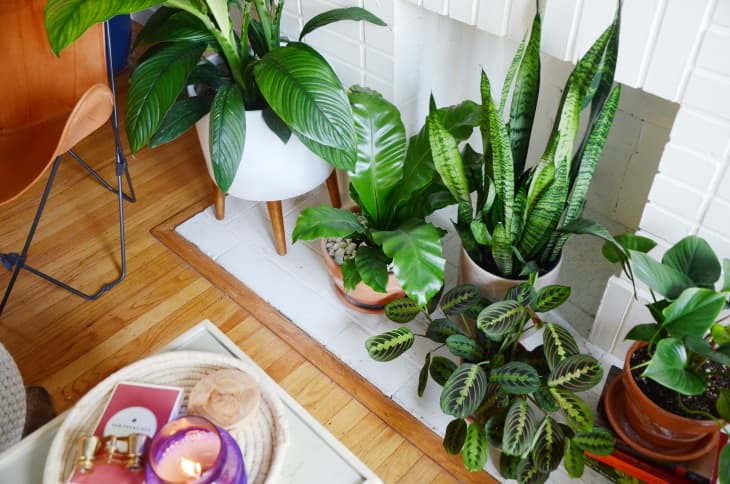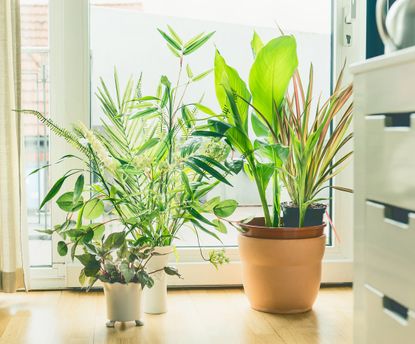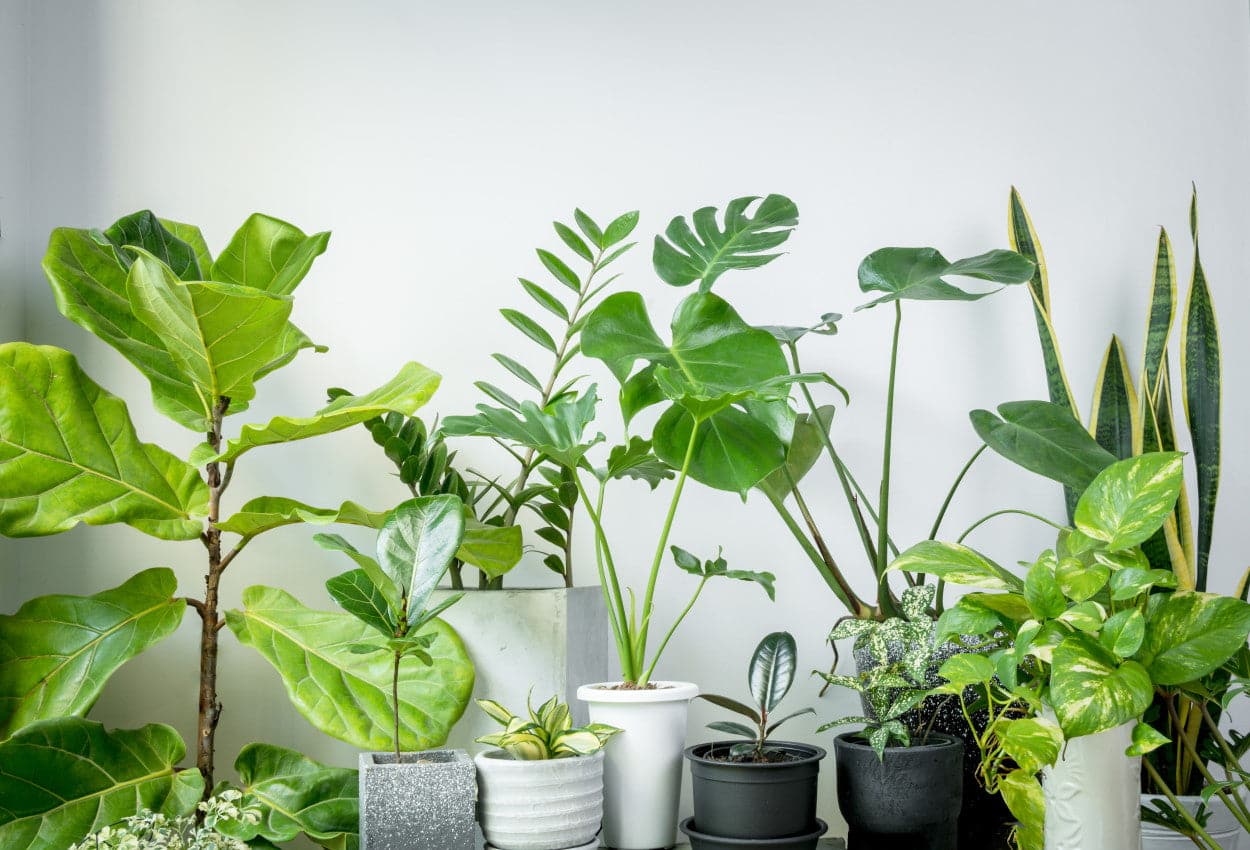To purify air effectively, you need at least one plant per 100 square feet. Ideally, aim for 2-3 plants per room.
Indoor plants not only beautify your home but also improve air quality. They filter harmful toxins and increase oxygen levels. Popular choices include snake plant, spider plant, and peace lily. These plants are low-maintenance and highly effective in purifying indoor air.
Place them strategically in living areas, bedrooms, and offices. Regularly care for the plants by watering and ensuring they get enough light. This way, you can enjoy a healthier and more pleasant living environment. Investing in indoor plants is a simple yet impactful way to enhance your home’s air quality.
Benefits Of Indoor Plants
Indoor plants offer many benefits. They can improve health and create beauty. Learn how plants help your home and well-being.
Health Improvements
Indoor plants purify the air. They remove toxins like benzene and formaldehyde. Clean air reduces headaches and allergies. Plants also boost humidity. Higher humidity helps with dry skin and respiratory issues.
Some common air-purifying plants include:
- Spider Plant: Effective at removing carbon monoxide.
- Snake Plant: Absorbs harmful toxins like formaldehyde.
- Peace Lily: Removes mold spores from the air.
Plants can even improve mental health. They reduce stress and anxiety. Looking at plants lowers blood pressure.
Aesthetic Appeal
Plants add beauty to any room. They come in many shapes and colors. Green leaves add a natural touch. Flowers bring bright colors and lovely scents.
Here are some tips to decorate with plants:
- Place a large plant in the living room corner.
- Use small plants on shelves or tables.
- Hang plants in the bathroom for a spa-like feel.
Plants can also create a focal point. A tall plant can draw the eye in a room. Grouping plants of different sizes adds depth and interest.
Use a variety of plants to make your home look lively. Mix and match for a unique style.
Understanding Air Quality
Air quality indoors can affect your health. Clean air helps you breathe better. It reduces health issues. Knowing what pollutants are inside your home is essential. This helps you decide how many plants you need to purify the air.
Common Indoor Pollutants
Your home has many common indoor pollutants. These include:
- Dust
- Pet dander
- Mold spores
- Volatile Organic Compounds (VOCs)
- Carbon monoxide
- Tobacco smoke
Dust comes from dirt and skin flakes. Pet dander is tiny flecks of skin shed by cats, dogs, and other pets. Mold spores are tiny particles that come from mold. VOCs are chemicals from paints, cleaners, and furniture. Carbon monoxide is a colorless, odorless gas from burning fossil fuels. Tobacco smoke contains many harmful chemicals.
Importance Of Clean Air
Clean air is vital for your health. It helps you feel better. It can improve concentration and productivity. Clean air reduces the risk of allergies and asthma.
Plants can help purify the air. They absorb pollutants and release oxygen. NASA research shows plants can remove toxins. Some plants are better at purifying the air than others.
Here is a table of some effective air-purifying plants:
| Plant | Pollutants Removed |
|---|---|
| Spider Plant | Formaldehyde, Xylene |
| Peace Lily | Ammonia, Benzene, Formaldehyde, Trichloroethylene |
| English Ivy | Benzene, Formaldehyde, Xylene |
| Bamboo Palm | Formaldehyde, Benzene, Trichloroethylene |
To purify air in a room, you may need multiple plants. The size of the room matters. You might need 2-3 small plants for a small room. For a large room, 5-6 plants may be needed.
How Plants Purify Air
Plants are natural air purifiers. They help to clean the air we breathe. But how do they do this? Let’s dive into the key processes.
Photosynthesis Process
Plants use photosynthesis to convert carbon dioxide into oxygen. They absorb sunlight through their leaves. This energy helps them transform CO2 and water into glucose and oxygen. The oxygen is then released into the air.
This process not only produces oxygen but also reduces carbon dioxide levels. It’s a win-win for us and the environment.
Pollutant Absorption
Plants also absorb harmful pollutants. They take in toxins like benzene, formaldehyde, and ammonia through their leaves. These toxins are then broken down by the plant.
Here is a table showing common pollutants and the plants that absorb them:
| Pollutant | Absorbing Plant |
|---|---|
| Benzene | Peace Lily |
| Formaldehyde | Spider Plant |
| Ammonia | Boston Fern |
By having these plants in your home, you can reduce the level of harmful chemicals in the air.
Plants also release moisture into the air through a process called transpiration. This helps to increase humidity and reduce airborne dust.

Credit: www.reddit.com
Types Of Air-purifying Plants
Plants are nature’s air filters. They remove toxins and improve air quality. Let’s explore the types of air-purifying plants. You can choose the best ones for your home.
Top Choices
Some plants are excellent air purifiers. Here are the top choices:
- Spider Plant: Easy to grow and great for beginners.
- Snake Plant: Tolerant to low light and neglect.
- English Ivy: Known for filtering toxins like formaldehyde.
- Bamboo Palm: Effective in removing benzene and trichloroethylene.
- Peace Lily: Removes mold spores from the air.
Low-maintenance Options
Some air-purifying plants need little care. These are low-maintenance options:
- Aloe Vera: Needs minimal watering and indirect sunlight.
- Pothos: Thrives in low light and requires little water.
- ZZ Plant: Can survive in low light and with little water.
- Rubber Plant: Prefers bright, indirect light and occasional watering.
- Philodendron: Grows well in low light and needs moderate watering.
Choosing the right plants can make your home healthier. Select a mix of top choices and low-maintenance options. Enjoy cleaner air with these amazing plants.
Factors Affecting Air Purification
Understanding the factors affecting air purification is essential for maximizing the benefits of indoor plants. Various elements influence how well plants can clean the air in your home. Below, we will explore these key factors to help you make informed decisions.
Room Size
The size of the room plays a crucial role in air purification. Larger rooms require more plants to achieve the same level of air quality as smaller rooms. Here’s a simple guide:
| Room Size (sq ft) | Number of Plants |
|---|---|
| 100 – 200 | 2 – 4 |
| 200 – 400 | 4 – 8 |
| 400 – 600 | 8 – 12 |
Use this table to estimate the number of plants needed. Always consider the specific needs of your room size.
Plant Placement
Where you place your plants significantly affects their air purification efficiency. Here are some tips:
- Near windows: Plants get natural light, boosting their purification ability.
- High-traffic areas: Place plants where you spend most of your time.
- Even distribution: Spread plants evenly to cover more air space.
Proper plant placement ensures optimal air purification throughout your home.
Calculating The Number Of Plants
Having plants indoors can help purify the air. But how many do you need? This section will guide you through the calculation process.
Nasa’s Recommendation
NASA recommends using plants to clean indoor air. They suggest at least one plant per 100 square feet. This means a 1,000 square foot home needs about 10 plants.
Practical Tips
Here are some practical tips to determine the number of plants:
- Room Size: Measure the size of each room.
- Plant Type: Some plants clean the air better.
- Maintenance: Choose plants that you can easily care for.
Let’s break it down further:
| Room Size (sq ft) | Number of Plants |
|---|---|
| 100 | 1 |
| 200 | 2 |
| 500 | 5 |
| 1000 | 10 |
For smaller rooms, consider placing plants in corners and near windows. This will optimize air circulation.
Maintaining Your Plants
Keeping your indoor plants healthy is essential for air purification. Proper maintenance ensures they thrive and clean the air efficiently. Let’s explore key aspects of plant care.
Watering Schedule
Watering your plants correctly is crucial. Different plants have different watering needs. Here are some tips:
- Check the soil moisture before watering.
- Water when the top inch of soil is dry.
- Use room-temperature water.
- Ensure proper drainage to prevent root rot.
Succulents need watering every 2-3 weeks. Tropical plants may need water weekly. Adjust the schedule based on the plant type.
Pest Control
Pests can harm your plants and reduce their air-purifying ability. Follow these steps to keep pests away:
- Inspect plants regularly for signs of pests.
- Remove pests manually or with water spray.
- Use organic insecticides if needed.
- Isolate infected plants to prevent spread.
Common pests include aphids, spider mites, and mealybugs. Quick action is key to pest control.
| Plant Type | Watering Frequency | Common Pests |
|---|---|---|
| Succulents | Every 2-3 weeks | Mealybugs |
| Tropical Plants | Weekly | Spider Mites |
Proper watering and pest control ensure your plants stay healthy and purify the air effectively.

Credit: www.apartmenttherapy.com
Combining Plants With Other Methods
Plants are excellent natural air purifiers. They absorb toxins and release oxygen. But combining plants with other methods can enhance air quality. This synergy creates a healthier indoor environment.
Air Purifiers
Air purifiers are effective devices. They remove pollutants from the air. Use them alongside plants for maximum benefits.
| Plant Type | Best Air Purifier |
|---|---|
| Spider Plant | HEPA Filter Purifier |
| Snake Plant | Activated Carbon Purifier |
Pairing plants with air purifiers can effectively reduce indoor toxins. Spider Plants work well with HEPA filters. Snake Plants complement activated carbon purifiers. This combination ensures cleaner and fresher air.
Ventilation Strategies
Proper ventilation is vital for indoor air quality. Open windows regularly to let in fresh air. This helps to reduce indoor pollutants.
- Use fans to circulate air.
- Install exhaust fans in kitchens and bathrooms.
- Ensure air vents are clean and unobstructed.
Combining these strategies with plants can significantly improve air quality. Fans help in circulating air, ensuring even distribution. Exhaust fans remove cooking fumes and moisture. Clean air vents maintain efficient airflow.
Using a combination of plants, air purifiers, and ventilation ensures optimal indoor air quality. This approach guarantees a healthier and fresher living space.

Credit: www.gardeningknowhow.com
Frequently Asked Questions
How Many Plants Do You Need For Fresh Air?
You need around 10-15 indoor plants for fresh air in a standard home. Key choices include spider plants, peace lilies, and snake plants.
How Many Plants In A Room To Purify Air?
You need 2-3 medium-sized plants per 100 square feet to effectively purify indoor air. Popular choices include spider plants and peace lilies.
What Plant Purifies The Air The Most?
The plant that purifies the air the most is the Snake Plant. It effectively removes toxins like formaldehyde and benzene.
How Many Plants Do You Need To Purify Your House?
You need 1 plant per 100 square feet to effectively purify your house. Popular choices include spider plants and peace lilies.
Conclusion
Choosing the right number of plants can significantly improve indoor air quality. Aim for one plant per 100 square feet. Select air-purifying plants like spider plants and peace lilies. These plants can help reduce toxins and enhance your living space.
Start small and gradually increase the number of plants for the best results.

My mission is to help you bring the beauty of nature indoors with expert advice, detailed plant care guides, and creative design ideas.





Leave a Reply